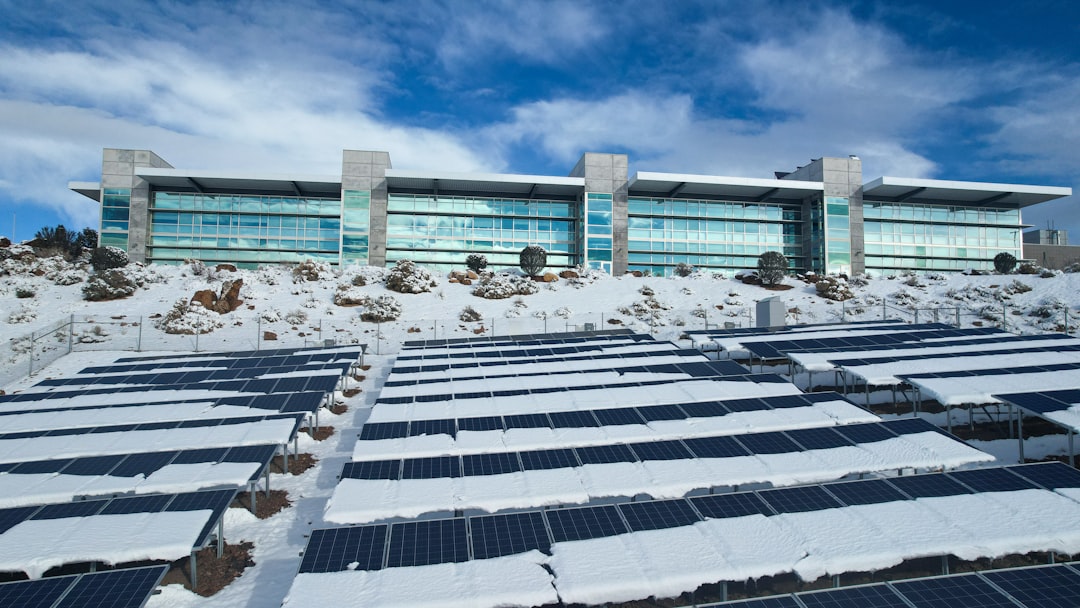When homeowners consider installing solar panels, their minds often leap to brand names, installation costs, or panel wattage. But one factor that frequently lurks behind the scenes, significantly affecting solar efficiency, is latitude. The Earth’s curvature and tilt impact how much sunlight different geographic regions receive throughout the year. Simply put, latitude matters when mapping solar efficiency to your roof and local climate.
Understanding Latitude and Solar Energy
Latitude is the measure of how far north or south a location is from the equator. It is directly tied to the angle and intensity of solar radiation a surface receives. Near the equator, sunlight hits the Earth more directly and consistently year-round. As one moves toward the poles, sunlight becomes more oblique and seasonal variation increases considerably.
This phenomenon affects the solar insolation—a measure of solar radiation energy received on a given surface area during a given time—making latitude a central element in determining solar panel productivity.
How Latitude Influences Roof Orientation and Tilt
Installing solar panels isn’t a one-size-fits-all procedure. The best orientation and tilt angle for solar panels depend largely on your location’s latitude:
- Equatorial Zones (0° – 15° Latitude): These areas receive direct sunlight almost vertically. A flat or slightly angled panel configuration is often sufficient.
- Mid-Latitudes (15° – 45° Latitude): This includes much of the U.S., southern Europe, and parts of Asia. Panels need to be tilted at an angle roughly equal to the latitude to optimize solar gain.
- High Latitudes (Above 45° Latitude): Longer summer days and low solar angles demand a steep tilt to capture available sunlight, especially in winter months.
The orientation also plays a critical role. In the Northern Hemisphere, solar panels should typically face south to receive the most sunlight throughout the day. In the Southern Hemisphere, the optimal direction is usually north.
Climate Considerations: Beyond Latitude
While latitude provides a theoretical baseline for solar performance, climate nuances can either enhance or reduce solar efficiency:
- Cloud Coverage: Tropical zones near the equator may receive ample sunlight, but frequent cloud cover and rainy seasons can reduce effective sunlight hours.
- Air Quality: Urban smog and airborne particulates can reflect and scatter sunlight, decreasing panel efficiency even in sunny areas.
- Temperature: Solar panels actually operate less efficiently in extreme heat. Cooler climates with clear skies can sometimes outperform hot, arid regions.

Hence, even at the same latitude, two homes can experience vastly different solar outcomes based on local meteorological conditions.
Factors That Dictate Real-world Solar Efficiency
Once latitude and climate are understood, several other site-specific details help pinpoint the actual efficiency one can expect from a solar panel installation:
- Roof Pitch and Shading: Does the angle of your roof align with your optimal solar angle? Are nearby trees or buildings obstructing direct sunlight?
- Panel Technology: Some panels perform better in low light or high temperatures, which can help compensate for less-than-ideal geographic circumstances.
- Tracking Systems: Solar trackers adjust panel orientation throughout the day. While more expensive, they can drastically improve energy output, particularly in higher latitudes.
Solar Mapping Tools: Navigating Choices with Precision
Today’s digital tools allow homeowners and installers to take the guesswork out of solar feasibility. Geographic Information System (GIS)-based platforms can visualize how solar radiation varies across the globe and down to the level of individual rooftops.
These tools calculate solar access scores, shading analysis, and return on investment (ROI) tailored to a specific latitude and property. Some even use satellite imagery to assess roof exposure and surrounding obstacles in real-time.
Such data not only improves accuracy but also empowers consumers to make smarter, site-specific choices. Rather than broadly assuming that “it’s sunny here, so solar will work,” these programs drill into the variables that matter most.
Case Studies: Latitude in Action
1. Phoenix, Arizona – 33.4° N
Known for its sunny climate, Phoenix combines low latitude with arid conditions, leading to excellent year-round solar performance. Panels are typically tilted at around 30° to match latitude and optimize solar gain. However, the desert heat can slightly affect efficiency, so panel selection and ventilation are important.
2. Berlin, Germany – 52.5° N
Despite its northern location, Germany has been a pioneer in solar adoption. Thanks to supportive government policies and efficient engineering, systems are optimized with steeply tilted panels and advanced inverter technologies. Still, longer winters and frequent cloud cover limit annual productivity compared to southern regions.
3. Quito, Ecuador – 0° Latitude
Located directly on the equator, Quito receives nearly equal daylight year-round. Flat or minimally tilted panels perform well; however, high altitude and cloud variability during rainy seasons introduce complex calculations for optimal use.
Planning for the Long-Term
Solar panels are a 25- to 30-year investment. Homeowners should not just consider current latitude and weather but also look ahead to potential climate shifts. For instance, urban development could increase shading, or hotter summers may shift the overall performance curve of certain panel types.
To prepare for these long-term factors, it’s wise to:
- Invest in scalable systems allowing for future panel additions as tech improves.
- Monitor system performance using app-based platforms to check changes over time.
- Consult with local experts familiar with regional climate and industry standards.
Conclusion
The path to a successful solar installation starts not with rooftop measurements or equipment selection, but with a proper understanding of latitude and how it influences energy generation. While latitude sets the framework, climate and design choices fill in the details. By marrying geographic science with technological tools, homeowners can ensure they harness the sun’s power efficiently—no matter where they live.
Frequently Asked Questions (FAQ)
- What is the best angle to install solar panels at different latitudes?
- As a rule of thumb, the panel tilt angle should roughly equal the local latitude for optimal year-round performance. Adjustments might be made for seasonal variations if panels are adjustable.
- Can solar panels work effectively in northern or cloudy regions?
- Yes. While solar output may be lower, advancements in panel technology and energy storage, along with supportive policies, make solar viable even in less sunny climates.
- Are tracking systems worth the cost at higher latitudes?
- In regions with significant angular variation of the sun, automated tracking systems can boost output by 25–35%, often justifying their higher installation cost.
- Does temperature affect solar panel efficiency?
- Yes. High temperatures can reduce the efficiency of photovoltaic cells. Cooler climates with clear skies are often ideal from an efficiency standpoint, despite receiving less total sunlight.
- How can I find out my roof’s solar potential?
- Online solar calculators and mapping tools, often provided by government or utility programs, can analyze your roof pitch, orientation, shading, and geographic location to estimate solar potential.
